- Home
- Alistair Moffat
The Secret History of Here Page 4
The Secret History of Here Read online
Page 4
9 January
The bitter cold of the morning plumes my breath and Maidie’s walk is more purposeful than usual, even brisk. The store of sniffs in the frosted grass was meagre and the little terrier only paused when a pheasant shrieked somewhere in the home paddocks. She barked loudly at the intrusion, and although the daft bird was silenced she continued, but with pauses. I realised that her barks were echoing across the little valley and that she was barking at her own bark.
Nithered is the expressive Scots word for shivering cold and even through four layers I could feel the chill penetrate. The language I was raised in is full of expressive words and phrases that describe the weather, the land, and its flora and fauna. And it does so with greater precision than modern, urban English. My dog and I walked out on a glaisterie morning, one where the puddles and wet places had a thin covering of ice, one that would break easily. Smirr is a fine rain and a slounge is a downpour. A plouter can be the result, a wade through mud.
Like Gaelic, Scots is full of subtle shades of meaning in its description of the natural world. It was important to be lexically tight because the precise colour of cows, the state of the weather and what it might become, and the look of the land all mattered. Before the enclosures of the seventeenth and eighteenth centuries, animals sometimes strayed and if it was a mallachie stirk that was lost, a steer whose coat was a pale, milky colour, then the search narrowed down and ownership was clearer.
Rural Scots is dying because not enough people speak it and few of those who do are passing it on. I bear a shared guilt for that loss. When I went to university, in those far-off days when free education was a right and not an expensive commodity, I was forced to adopt a version of standard Scots English and abandon the language of my younger days. My children speak a version of English that owes more to the Americanisms of the internet than my native Scots. Not just a means of expression will be lost, so will a way of seeing the world, understanding better a way of life.
We will have welcome sun today, but even so the woodburners have been lit. Lindsay and I will both be out this morning but our three dogs, the firedogs, will bask in their glow.
10 January
There was no warning. At the corner of the Top Track, where a young wood borders the wrack of the barren area where sitka spruce and Scots pine once stood, Maidie launched herself on an urgent scent, a fresh trail that she followed frantically, her nose an inch off the ground. And then she stood still and barked at the edge of the trees. Out of the darkness a roe deer stag erupted. No more than six feet from me and the startled dog, the buck raced past us along the Top Track and jumped a high gate before disappearing into the East Meadow.
I was so taken aback, shocked even, that I heard myself catching my breath before Maidie almost pulled me off my feet in an attempted pursuit. Quite how a West Highland terrier no more than fourteen inches high and weighing less than a stone would bring down an adult roe deer stag was lost in the red mist of the moment. I was glad I had decided always to take her out on a lead. If Maidie had been off it and chased the deer, I would never have seen her again.
The early dark of the winter is a bridge between worlds. While we all sleep snug in our beds, the world of the night wakes. Badgers climb up out of the huge sett on the edge of the Deer Park and prowl the woods and the margins of the fields and tracks for prey. These little grey bears can be vicious. One of the reasons we now rarely see hedgehogs is because the badgers hunt them. Their classic defence of curling into a ball of sharp quills is not effective. The badgers simply roll the hedgehogs over and tear at their soft bellies with their long claws.
Out late in the winter darkness with a torch to investigate a burst of whinnying and banging down at the stable yard, the beam caught sight of the culprit. The red retina of a big dog fox flickered before he disappeared into the thick hedge behind the looseboxes. Last year I came across the corpse of a young vixen in the East Meadow field where the brood mares live out. She lay on her back, in the open, close to the shelter where the mares stand in the worst of the weather, but there were no attack marks on her of any sort. I think she may have stalked too close to one of the mares in the night and been kicked in the head so hard that the vixen haemorrhaged. I picked up the corpse by the hind legs and saw that rigor had not yet set in, meaning she had died during the night that had just gone. The red of her coat and white down of her belly fur was beautiful, but the day after I noticed that the vixen had been dragged away out of the wood where I had put her.
We fear the darkness and its creatures for ancient and good reasons. The world of the night can be vicious, elemental.
11 January
I have ten summers left, if I am lucky and remain in reasonable health. Next June I shall be sixty-nine and it occurred to me that I thought of the rapidly contracting future not in numbers so much as seasons. Older cultures counted years in winters because it was a time of rest, of relative inactivity. Early medieval Scandinavia and Anglo-Saxon England reckoned time in that way. Numbers apparently do not matter much to the Nuer people of South Sudan. Their sense of the past is expressed in a memory of events: the year of the flood, the year of the bountiful harvest, the year of the drought, and so on. How they remember a year when nothing much happened, I am not sure.
12 January
Silhouetted stark against the morning sky, our old oak watches over us. The tallest tree, it stands on a small hummock of rising ground by the burn that runs behind the stables. It has drunk deep for centuries from the pure water that runs at its roots and may be four or five hundred years old. With no shelter from the south-westerlies that whistle across the flat Tile Field, its branches have hesitated, growing in jerky zigzags, stubby and short so as to give the wind no purchase. The old oak’s immensely thick trunk is covered with large burrs, patches of knobbly wood that cover old wounds.
This venerable tree was in its first flush of youth, standing on the banks of the Tile Field when it was still a loch and when James VI of Scotland was travelling south in triumph to be crowned in 1603 in London as James I of Great Britain and Ireland. Its ancestors colonised the Tweed Valley in the centuries between 7000 and 6500 BC. In oak years, that great arc of time might be counted as the span of twenty generations. In human years, that may be about four hundred generations. Old oaks are silent witnesses to history.
When the Mason brothers and Walter Elliot walked the freshly ploughed fields under the budding branches of our oak’s near neighbours, they picked up flints that spoke of immense and now impossible journeys. The origins of these lost or discarded arrowheads, spear tips and scraper edges are discovered by typology. Different and sometimes far distant prehistoric communities knapped flints in different ways and from different sorts of rock nodules. At the Rink, a nearby farm where the Ettrick flows into the Tweed, thousands of flints and fragments have been found. River meetings were like the junctions of main roads because most longer journeys were made in small boats. On the river terrace below the Rink, the Masons and Walter discovered flints that had made a very long journey. They had come from what is now Denmark.
Stretches of that journey were probably made on foot. Until as late as 4000 BC much of the North Sea was dry land. During the last Ice Age, a vast ice cap had pressed down hard on Scandinavia and the Arctic and had caused the Earth’s crust to the south to bulge upwards. What archaeologists have called Doggerland (after the Dogger Bank, once a range of hills) was for four or five millennia a vast suBContinent patterned by hundreds of river valleys, lakes and hills. Undersea maps made for the oil industry have revealed a drowned landscape that was home to many communities of hunter-gatherers. They rustled the leaves of the lost forests, gathered their bounty and fished its rivers and lakes. And some communities, who originated in what is now Denmark, probably over the span of several generations moved across the vast suBContinent to arrive at the Rink and knap their distinctive flints on the river terrace. Or perhaps those skills were simply transmitted across Doggerland. Or maybe the flints themselves passed throu
gh several pairs of prehistoric hands.
The Doggerland communities may also have been prehistory’s first architects. On the Northumberland coast archaeologists have found traces of a remarkable structure. Dated to between 7700 and 7600 BC, all that remains is a series of postholes. Their size, depth and placing allowed a hunter-gatherer shelter to be reconstructed. Using the trunks or the larger boughs of trees, these people built what looked like a massive version of a tipi or wigwam. The angle of the postholes showed that the trunks were canted inwards and secured at the crown before the gaps were stopped up by turf and other infill. The ground plan of the wooden wigwam was an oval shape with two stone hearths and large enough to accommodate six to eight people. Found on the western edges of Doggerland, this building was more than a shelter; it spoke of permanence. Perhaps it was a winter base camp from where summer hunting expeditions set out into the interior and the shadows of the Wildwood.
13 January
For much of the night the wind growled around the house, rumbling and gusting, rattling the slates. When I woke, there was a real chill and as I switched on the downstairs lights chaos greeted me. The double front doors were wide to the wall, thrown open by the high winds, and papers, magazines, books and a box of Christmas decorations had been strewn over the floor. But much worse, Lillie had gone.
Our lovely dog was nowhere to be found. All sorts of dire disasters – dog theft is now distressingly common – raced through my head as I shoved the doors shut and bolted them. Having roused my wife, I went outside with a torch, calling her name. And found her very quickly. Thank goodness. Following her Labrador instincts, she had found food, the windfall apples that had intoxicated the blackbirds.
Of all the elements, I fear the wind most – more than ice, snow or heavy rain. Storm-force winds can and have been immensely destructive here, and wind-driven winter rain can reduce animals close to exhaustion, even death, if it penetrates their coats and there is little respite. The horses hate it.
All of the older houses in our valley were built with their backs to the prevailing southwesterlies. Front doors and most windows were let into the eastern façades. When we renovated and extended the farmhouse, the original building had only one window looking to the west, and it was needed to light the staircase. I have seen a wind rose for here. It shows the directions of the prevailing winds that blow in the western Scottish Borders. Like a compass rose, it has the sixteen cardinal points marked, from north to north-north-east all the way round to north-north-west, and it expresses the frequency of the winds by extending the length of the sixteen spokes. By far the longest is the southwesterly.
The same wind has blown across this landscape for millennia and its direction is detectable even on flat calm days. It moulds the shape of the trees, especially those on the fringes of open areas like the Hartwood Loch. On the windward side, fewer branches grow and they are almost always shorter and less abundant than those on the leeward side.
Two more prehistoric wooden wigwams have been discovered recently, one on the East Lothian coast and the other near South Queensferry, when the approach roads for the new Forth road bridge were excavated. Their sites show an ancient awareness of the power of the winds, for the interiors were sunken, dug down into the ground, and the tree trunks raised in dips in the landscape that were more sheltered. Their conical shape was sturdy because it was much heavier at the base and the rounded sides let the winds slip past it rather than slam into any flat surfaces. More of these extraordinary structures wait to be discovered.
If the hunter-gatherers from the Hartwood Loch had built a wooden wigwam, they would have avoided its banks, where our farmhouse sits squarely in the teeth of the wind, protected only by the trees we have planted around it. Beyond Windy Gates, and on the edge of another, much more modern loch that was made larger when the nearby Haining House was remodelled and landscaped, is our East Meadow. It slopes northwards down to a little burn that has no name on the map. No more than a foot or two wide, this glinting, tinkling spring rises near an old quarry and runs for only two hundred yards. Its waters are crystal pure and our fencing incorporates it into the fields so that the horses can drink without the need for a trough. But, as important, the foot of the East Meadow is a calm, sheltered place. Even when the wind rages and snarls out of the south-west, it is a relief to walk down the track into the sudden quiet of that dip. If we have the remains of a wooden wigwam, they will be found there.
14 January
There seemed to be no light in the east, and yet it was not black-dark. Somewhere behind the thick, woolly clouds, the sun was rising in the clear blue air. Walking down the Long Track, all I could see of its wide vistas were pale shadows, darker for the woods and the heads of the hills. After the wind-blown drama of yesterday, the land was quiet. Even the crows roosting in the trees by the Deer Park were dozing.
One of the joys of the BBC Scotland website is its photographs. Sent in by members of the public, they capture, often very beautifully, the moods of the land and the cities; Highland glens contrast with the busy streets of Glasgow. At this time of year, the photographers’ instinct is to seek the light. There were several stunning sunrises over lochs and one glorious shot of the meandering River Forth as it wound its way to the Firth and the sea. The cities were photographed in the late afternoon or early evening, their street, shop and hotel lights a kaleidoscope. Only one photograph was taken on a gloomy, misty, frosty morning, a view up a long ride in a sitka spruce forest that looked spooky, spiky and very graphic.
Just as animals and we do, the photographers looked for the sun in the depths of January. In the long dark, a time of rest when it was normal for people to stay indoors and pull up the covers in their warm beds, these were welcome windows on a Scotland that also waits to wake. So if I am trying to rediscover these ancient rhythms, why am I trudging through the early morning and not staying abed or pottering in the welcoming lights of the kitchen, making toast?
We all tell ourselves stories about ourselves, but only some of them are true. One of mine is that I am a morning person, the earlier the better. From the age of eleven, I did a milk round that had me out of the house at 6 a.m., and I liked it, most days. My mother said it was good to ‘be up and doing’ when she made me my porridge. In adult life, there was also a competitive element. When I was Director of Programmes at Scottish Television, I was first into the office in Glasgow even though I had to drive from our home in Edinburgh.
But I think there might be another, more recent story, simpler and less about long-term habits or conditioning. A close friend of my parents was a dairy farmer, and after a convivial Saturday night in the pub he always left promptly with the same phrase, ‘the kye’ll no’ wait’. The cows will not wait. He would have to be up and doing early down at the milking parlour because if he did not bring the kye in, their udders would be bursting. He got out of his bed – every morning in life – because if he did not, animals would suffer. In a much more domestic mode, one of the reasons I get up is because the dogs need to be taken out to pee, be fed and then walked, and my brain, such as it is, needs to begin working. I have no choice.
Perhaps it is these daily, weekly rhythms – and they begin with routine, tasks done automatically and always in the same order – on the farm that make me less and less willing to leave it. A day trip to Edinburgh, or at a stretch to London, is all I can manage. I don’t like staying away and I would never consider taking a holiday. On those rare occasions when I am away at an equestrian event, I still get up early, always first for breakfast, usually after a walk, without Maidie.
15 January
My neighbour has moved about fifty of his pregnant ewes down to the grass park on the eastern side of the Long Track. It cants to the south to catch any sun there is and after the mild weather since before Christmas the park is green. Grass grows at plus five degrees and some days have seen unseasonal temperatures of plus eight or nine. Lambing begins in late March here, or when the weather has turned. Up at the stea
ding at Brownmoor, on a ridge only a mile or so to the west, the heat lamps in the lambing shed will burn all night over the straw-covered pens until the end of April. When they are lit and the first ewes come in, the shed becomes a beacon leading us out of the winter darkness.
Far beyond the farm, out there, in the country and across the world, bewildering chaos, chronic uncertainty and deep divisions are causing the post-war consensus to crack. Dramatic fissures between countries and within countries are widening as fascism rears its ugly head once more in the Western democracies. Demagogues are elected by voters who crave their simple, brutal solutions. Immigrants are targeted, social services shrink and basic human decencies are no longer to be taken for granted in public discourse.
As I read these depressing headlines, I think back to my grannie and her young life at Cliftonhill. With the gains he had negotiated, William Moffat knew that his family would be safe and not starve, whatever political mayhem happened out in the wider world. The generations might be coming full circle. Our farm could quickly be converted to produce much of the food we need if the economy paralyses, distribution crashes and there are shortages in the shops. All of the horses could be turned out in the Deer Park to forage for themselves in the spring, summer and autumn, while in the East Meadow enough hay could be cut to see them through the winter. Their muck would fertilise the hayfields as we moved them around. In the three-acre home paddock by the farmhouse, a large, south-facing and sheltered garden could be laid out and cultivated quickly. In the stables we could keep a cow and pigs, and by shutting all the doors mushrooms, rhubarb and other plants that like the dark could be cultured. This is not a pipe-dream but an insurance policy and one of the reasons I stretched myself to buy as much land as I could all those years ago. Instead of stockpiling tins of beans and tuna, I will buy lots of packets of seeds. In an old conservatory in the farmhouse I grow tomatoes and know that it is an excellent place to propagate plants – and grow the possibility of a future.

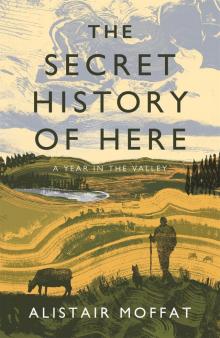 The Secret History of Here
The Secret History of Here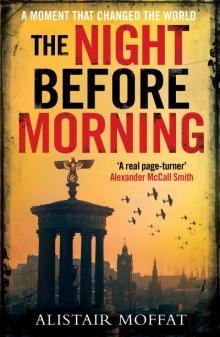 The Night Before Morning
The Night Before Morning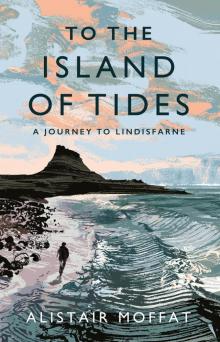 To the Island of Tides
To the Island of Tides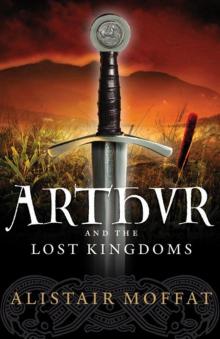 Arthur and the Lost Kingdoms
Arthur and the Lost Kingdoms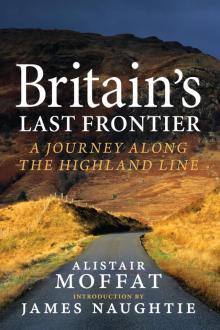 Britain’s Last Frontier
Britain’s Last Frontier The Faded Map: The Lost Kingdoms of Scotland
The Faded Map: The Lost Kingdoms of Scotland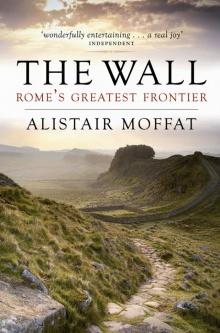 The Wall
The Wall